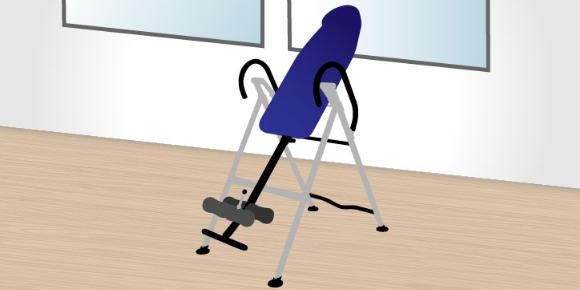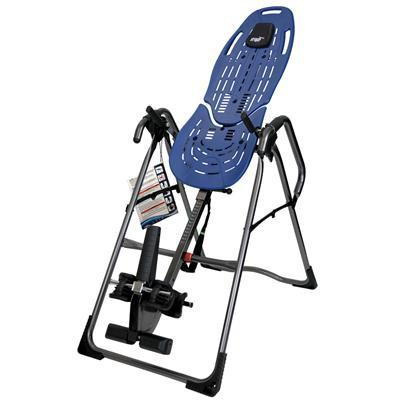Inversion Tables, What's The Point?

- posted: Jul. 01, 2021
An inversion table is something we often have patients using in the office. Some may be wondering; why the heck am I using this?
Using an inversion table is a gentle, passive way to target pain at the source and care for all weight-bearing joints. This progressive form of traction allows each joint to be decompressed by the same weight that compresses it while upright. When we look at your x-rays and see disc degeneration (compression), this is a main indicator that should be using traction and relieving the pressure off of your system.

To put it simply, inverted decompression creates an ideal stretch that improves spinal health and targets back pain by helping to:
1. Rehydrate discs:
When pressure is reduced on the disc, that changes pressure gradients in the body with allows nutrients to get into the disc which otherwise could not! Interestingly one of the most compressive activities for the discs is sitting. The muscles in the stomach and back relax, but the pressure in the spine increases. If you are sitting in poor posture the pressure in the lumbar can climb as high as 250%. The real surprise occurred while lying down. The pressure inside the disc only lost 75% of standing body weight – it never went below 25%! This residual compression seems to be due to the hundreds of ligaments and muscles that encase the spine, holding it in compression like a mass of rubber bands.
2. Reduce nerve pressure:
The height of the discs relates to the size of the passageway for the nerve roots to exit from the spinal column, so a plump hydrated disc creates maximum clearance, helping to alleviate pressure or pinching of the nerve root. Damage to the discs or de-hydration of the discs can result in nerve root entrapment, which is commonly called a "pinched nerve".
3. Relax tense muscles:
Muscles are gently stretched as circulation is increased, helping to reduce tension. It is suggested that the stretch to the muscles while inverted allowed the circulation to enter the sore muscle, bringing oxygen-rich blood inversion therapy also stimulated the lymph system to clear the muscle of the toxin build-up. The user, therefore, would feel a decrease in pain and the stiffness in the muscle would subside.
If you are interested in using the inversion table and are an established patient, please talk with one of the doctors to see if it's a good fit for your care!

- posted: Jul. 01, 2021
An inversion table is something we often have patients using in the office. Some may be wondering; why the heck am I using this?
Using an inversion table is a gentle, passive way to target pain at the source and care for all weight-bearing joints. This progressive form of traction allows each joint to be decompressed by the same weight that compresses it while upright. When we look at your x-rays and see disc degeneration (compression), this is a main indicator that should be using traction and relieving the pressure off of your system.

To put it simply, inverted decompression creates an ideal stretch that improves spinal health and targets back pain by helping to:
1. Rehydrate discs:
When pressure is reduced on the disc, that changes pressure gradients in the body with allows nutrients to get into the disc which otherwise could not! Interestingly one of the most compressive activities for the discs is sitting. The muscles in the stomach and back relax, but the pressure in the spine increases. If you are sitting in poor posture the pressure in the lumbar can climb as high as 250%. The real surprise occurred while lying down. The pressure inside the disc only lost 75% of standing body weight – it never went below 25%! This residual compression seems to be due to the hundreds of ligaments and muscles that encase the spine, holding it in compression like a mass of rubber bands.
2. Reduce nerve pressure:
The height of the discs relates to the size of the passageway for the nerve roots to exit from the spinal column, so a plump hydrated disc creates maximum clearance, helping to alleviate pressure or pinching of the nerve root. Damage to the discs or de-hydration of the discs can result in nerve root entrapment, which is commonly called a "pinched nerve".
3. Relax tense muscles:
Muscles are gently stretched as circulation is increased, helping to reduce tension. It is suggested that the stretch to the muscles while inverted allowed the circulation to enter the sore muscle, bringing oxygen-rich blood inversion therapy also stimulated the lymph system to clear the muscle of the toxin build-up. The user, therefore, would feel a decrease in pain and the stiffness in the muscle would subside.
If you are interested in using the inversion table and are an established patient, please talk with one of the doctors to see if it's a good fit for your care!
Visit our Office
9126 Lapeer Rd. Davison, MI 48423
810-654-0550
